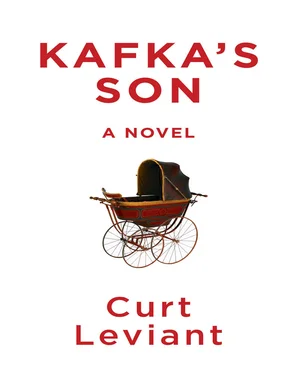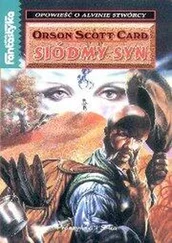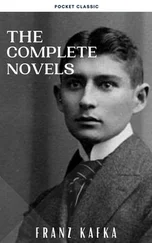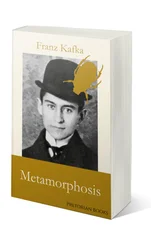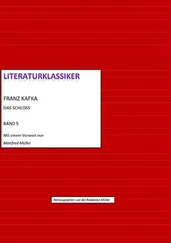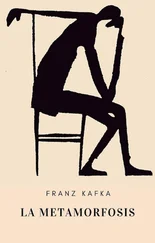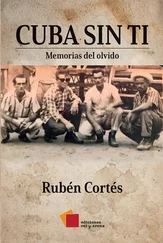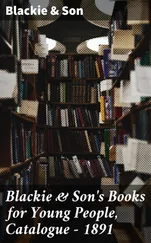“Excuse me, sir,” I addressed him. “Do you speak English?”
“Why of course I do.” He straightened up. “For an educated person to be un-Englished nowadays is the equivalent of being without a tongue.”
I liked his formulation but wondered if he realized his apt pun.
“I want to compliment you on your beautiful museum.” I don’t know why I said that. I was being obsequious, condescending, and a liar too. Aside from some enlarged photographs and a romanticized thirteen-minute video that showed more of Prague than of K, there wasn’t much in this so-called museum. No manuscripts, no memorabilia. The museum coasted along on its K name. This pathetic little space didn’t even deserve the name museum; it was more a tourist diversion, a well-meaning but very minor showcase.
“I am so pleased. We try to keep the name and legacy of our great writer alive here. I am Doctor Hruska.”
I decided to cloak the important question bubbling on my lips in the guise of a compliment.
“And the fact that the legendary K’s legendary son also occasionally graces your museum is surely a plus for you.”
The director’s face fell. He beckoned me away from the receptionist to the rear wall where no one was standing. Dr. Hruska glanced up the stairs. Was anyone descending? Like in a spy movie, he checked left and right, surveying if the son or “son” was anywhere about before he spoke. I imagined the director would share some fantastic news with me, a true lover of K. Today was my lucky day. The A Major Major Discovery message that was sent to me — and by my pretty girl in the blue beret too — had seemingly come true. And now I would hear from him more amazing news, something like: Many of K’s children are here in Prague. Most of them survived the war. If you wish, I will introduce you to some of them. Did Dr. Hruska realize he was again shifting the focus of my film, perhaps even creating a new one for me? K’s Children .
At once my eyes became lenses, my ears microphones. I was already — heart racing in anticipation for the second time in minutes — filming, recording, interviewing these legendary people, already living these precious, nonpareil moments. Modesty aside, I was making, rather, going to make, history.
But yet. And even. And but. But still. Even so. In that blank, neutral, empty, even gloomy moment before Dr. Hruska began to speak, my excitement abated. My prophetic heart. Even as he opened his lips, even before the words came out, I sensed no stars glittering, no music rising within me, saw no spiral of colors exploding before the credits: K’s Son(s) — The Living Children of the Legendary Master of Prague , a documentary film by…
The director said:
“You asked me before if I understand English. Now I shall ask you if you understand international sign language?”
But before I had a chance to ask him what he meant came another twist in the falling-leaf, turning-page scenario in which I was a participant, an actor, a golem.
To understand what happened next — and something did happen next, and it had nothing to do with K or his son — and how it happened, the museum’s ground-floor layout must be described. From where I stood with Dr. Hruska at the rear wall near the staircase, I had a grand view of the Old Town Square through the large front window. Perhaps the big plate glass, which cut down enormously on display space, was important for the museum, since people passing by outside — and there were multitudes — could look in and possibly choose to enter. In any case, as the director spoke, I was gazing out the window, watching the endless movement of people on the vast square.
Just then the girl in the blue beret came by again, rubbing her elbow on the window. She walked so close to the huge plate glass the back of her sign scraped the window. Like in trick photography, it penetrated the glass and a corner of her placard was on this side of the fluid, penetrable window.
As Dr. Hruska spoke, I made up my mind quickly — my movement actually preceding my thoughts — and broke off the conversation.
“Sorry, Dr. Hruska, I’ll…I’m… J have to…” And I shouted over my shoulder, “Be right back.”
The K Museum. The Altneushul. The girl in the blue beret. Sometimes I put third things first. Straight out the door I ran, not even turning to see the expression on the director’s face. With balletic agility — I’m a good dancer, remember? — I pirouetted and turned a quick right. Crowds of tourists, a group of Italian high school students singing and walking ten in a row, their arms around each other, a panoply of strollers block my view. The cascade of people so thick and swift it was like a horizontal waterfall. But I charged forward like a linebacker through the rush-hour crowd, stepping to the right here, veering and weaving to the left there, holding that imaginary football, racing to the one-yard line, one hand out stiffly, ready to thrust aside all tacklers who stood in my way, seeking the moving ad for the concert.
Aside from talking to the girl in the blue beret, I wanted to thank her for the message she and the unnamed fellow next to her brought me, bringing me closer to K. Even if Karoly Graf was not K’s son, it still would make an exciting addition to the film. And I would include the museum too, without commentary. Let the viewer make his own decision on that insignificant little space.
I caught up to her, pretended to be deeply interested in the details of tomorrow night’s concert printed on her placard. She smiled again. It wasn’t the smile of a hostess at an outdoor café luring customers with a smile that started and stopped with her teeth. From within came the smile of the girl in the blue beret. That smile affected me. Yes, I admit, it did. I held that smile in the palm of my hand and later glanced at it from time to time.
“Hi, do you speak English?”
“Yes.”
“How much are tickets for tomorrow night’s concert?”
She pointed to the fifteen kroner price.
“But if you buy now, it’s only twelve kroner. At the door, fifteen.”
I looked at her face, noted a little wave of black hair peeking out from under the beret.
“You have an interesting accent. Where are you from?” I asked.
“Georgia.”
“Atlanta?”
She smiled, chin down, looking at me over glasses that weren’t there. “No.”
“Macon?”
“No.”
“If y’all come from Joe-ja, how come ah doan heah a Suthen accent?”
“’Cause I come from northern Georgia.” And now she laughed.
“Ah, then you must be from Augusta.”
She gave a happy laugh.
At once I had the entire scenario. She had migrated from some European country to America and was now studying in Prague because tuition was much cheaper and was working to pay for her college costs.
I looked around at the other placard holders. No one else looked quite like her. Nobody wore a beret. The others had Slavic faces, either from here or Slovakia, high cheekbones, flat noses, wideset eyes. But she looked different. Maybe she wanted to call attention to herself with that navy-blue beret. Then again, maybe she just wanted to keep her head warm.
“You’re a college student, right?”
“Okay,” she said noncommittally. “So would you like to buy a ticket?”
Why didn’t she ask me where I came from, what accent I had, what I was doing in Prague? I wanted to tell her that she and her coworker had been instrumental in giving me a positive message. But I decided to hold back. If she was all business, I would keep still too. For a moment I also thought of sharing with her whom I had just met outside the K Museum. But just because Karoly Graf blurted out sensational info to me didn’t mean that I had to do the same. That’s how rumors spread.
Читать дальше
